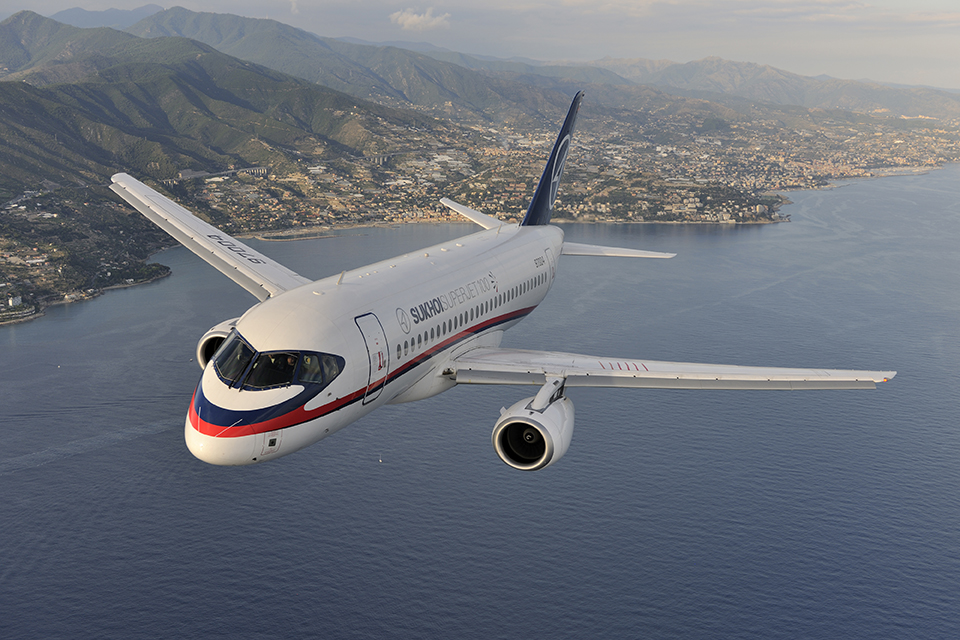The saga of Iran’s plans to buy Russian passenger aircraft took a new twist, with the head of Iran-Russia Chamber of Commerce Asadollah Asgaroladi declaring that the Russians are reluctant to sell their Sukhoi Superjet 100 airliners to the Islamic Republic.
“We agreed to buy Sukhoi from the Russians. But they did not sell, making excuses,” the seasoned trader was quoted as saying by the Persian daily Shargh.
Asgaroladi did not elaborate on the Russian excuses or why they were refusing.
“We had a clear intention for buying it, but they didn’t agree. We have made so many trips back and forth to Russia, but to no avail. The Russians have good passenger planes,” he added.
For almost two years, Iran remained reluctant to buy SSJ-100, amid the Russian plane’s bad reputation in Iran over its poor safety record. However, recently Iranian authorities hinted that they may be considering the purchase of the short-haul plane.
After a demonstration flight in Tehran last month, Maqsoud As’adi Samani, the head of the Association of Iranian Airlines, was quoted as saying that “Sukhoi showcased one of its products to representatives of Iranian airlines and a majority of them expressed interest.”
Earlier, he had said: “Buying the Sukhoi Superjet 100 planes is among the options for Iranian airlines. They will make a decision after considering the aircraft’s conditions and merits following the demo flight.”
In October, Ali Abedzadeh, the head of Iran Civil Aviation Organization, rejected plans to purchase the plane, stressing that it has not received any request from Iranian airlines for buying the aircraft.
Many Iranian experts question the safety of the Russian-made middle-range plane, arguing there are far better options for Iran, which is planning to rejuvenate its aging air fleet after years of sanctions imposed by the West over the country’s nuclear energy program.
As part of a landmark nuclear deal between Iran and world powers, sanctions were removed in exchange for limits on Iran’s nuclear program.
The poor performance of Russian planes such as Tupolev has made Iranian airlines lose faith in Russian aircraft. There have been four crashes in Iran since 1993, leading to 445 fatalities. Add to this two crashes of Antonov planes, as well as two others with Ilyushin aircraft both made in Russia.
“Iranians have a negative mindset about Tupolev, but SSJ-100s are substantially different,” Samani said, adding that European countries such as France and Italy have also participated in manufacturing that plane.
European planes have a better reputation in Iran. The first plane deal Iran signed after the lifting of sanctions in January was with the French giant Airbus for more than 100 jetliners, which was followed by a similar deal with Airbus’ US-based rival Boeing. The two deals were finalized last month.
Iran also clinched a deal with French-Italian manufacturer of short-haul planes ATR to meet its pent-up demand for regional jets. To that end, Iranian officials have also been in talks with Brazil’s Embraer and Japan’s Mitsubishi Aircraft Corporation.
Experts say the 108-seat SSJ-100, which is the first jetliner Russia has developed since the collapse of the Soviet Union, is a replica of an Airbus model.
In 2012, the plane crashed in a demonstration flight operating from Halim Perdanakusuma Airport in Jakarta, Indonesia.
Nonetheless, when it comes to prices, Russian planes have a competitive edge. SSJ-100 is more than 50% cheaper compared to the 107-seat Airbus A318 and 30% less than the 98-seat Embraer 190.
There have also been reports that Russia has made manufacturing partnership offers to Iran. Russia’s Deputy Prime Minister Dmitry Rogozin said in November 2015 that the plane can be partly localized by Iranian producers.
“If Tehran agrees to purchase SSJ-100, we will discuss the partial localization of production in Iran,” he said.
Russian news agency Sputnik quoted Iran’s Minister of Industries, Mining and Trade Mohammad Reza Nematzadeh as saying on the sidelines of St. Petersburg International Economic Forum in June that Iran was interested in the joint production of the plane.


